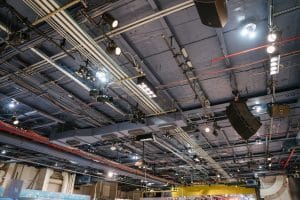
Optimizing Lighting Systems for Energy Efficiency and Effectiveness
LED technology is more energy efficient than HID, incandescent, and fluorescent by at least 50%. Higher output LEDs enable the Facilities Manager to install fewer
The State
Of the Nation’s
Energy Economy, and
Our Take on Industrial Power,
Its Efficient Conversion to Work,
And What We’re Doing With It Currently
The 3 kEys
LED lighting has transformed energy efficiency in industrial and commercial environments, offering significant savings and improved lighting quality. However, even the most advanced LED systems can be fine-tuned to further enhance performance. By implementing smart, low-cost operational strategies, businesses can optimize energy use, maintain high lighting efficacy, and minimize waste. These techniques do not require costly upgrades but instead rely on thoughtful management and simple adjustments to existing LED infrastructure.
Optimize Light Levels with Task Tuning
Not all spaces require the same level of illumina...

LED technology is more energy efficient than HID, incandescent, and fluorescent by at least 50%. Higher output LEDs enable the Facilities Manager to install fewer

The 3 kEys Don’t assume LEDs don’t require maintenance because of their long life. Better maintenance = higher performance. A structured, disciplined approach results in
LED technology is more energy efficient than HID, incandescent, and fluorescent by at least 50%. Higher output LEDs enable the Facilities Manager to install fewer…
The 3 kEys Don’t assume LEDs don’t require maintenance because of their long life. Better maintenance = higher performance. A structured, disciplined approach results in…
The Maven publishes these pearls weekly, or more frequently if we feel like it, because we believe America is already great, and poised to be even greater if we commit to doing our part towards cooling the planet. Publisher Ron Motsch can be reached at (616) 570-9319.

Our power letter, full of pearls of wisdom from years of contracting experiences, by and for Building Managers and Industrial Contractors.

A searchable database of power and controls resources we’ve either created from within, published from our subscribers, or curated from around The Internet.

Our industrial contracting firm, building, deploying, and managing a suite of the most productive and admired power performance technologies on Earth.